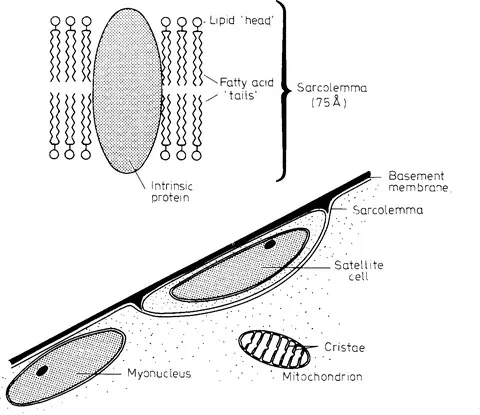
- 374 pages
- English
- ePUB (mobile friendly)
- Available on iOS & Android
Neuromuscular Function and Disorders
About This Book
Neuromuscular Function and Disorders focuses on the various processes underlying disordered neuromuscular function. Topics covered include the nature of membrane defects in myotonia and familial periodic paralysis; the disorder of neuromuscular transmission responsible for myasthenia gravis and the various pseudo-myasthenic syndromes; and the disorders of Schwann cell function which cause demyelination. This book is comprised of 28 chapters divided into two sections and begins with a discussion on the normal anatomy and physiology of peripheral nerve and muscle. Included in the first section are descriptions of the ionic mechanisms responsible for the resting and action potentials of nerve and muscle; the sequential stages in neuromuscular transmission; excitation-contraction coupling; the sliding filament mechanism of myofibrillar shortening; and the morphological and functional properties of motor units. The neurophysiology of exercise and muscle fatigue is also considered, along with the nature of the trophic influences exerted by the motoneuron and muscle fiber upon each other. The second half of the book deals entirely with various diseases of peripheral nerve and muscle, together with diagnostic procedures and therapeutic management. A consistent theme in this section is the recognition of neural abnormalities in diseases hitherto considered as primary disorders of the muscle fiber. This monograph should be of value to neurologists, medical students, research workers, and students and research scientists in physiology, zoology, pharmacology, kinesiology, and physical education.
Frequently asked questions
Information
THE MUSCLE FIBRE
Publisher Summary
NUMBERS AND SIZES OF MUSCLE FIBRES
| Muscle | No. of muscle fibres | Author |
| First lumbrical | 10 250* | Feinstein et al. (1955) |
| External rectus | 27 000 | Feinstein et al. (1955) |
| Platysma | 27 000 | Feinstein et al. (1955) |
| First dorsal interosseous | 40 500 | Feinstein et al. (1955) |
| Sartorius | 128 150* | MacCallum (1898) |
| Brachioradialis | 129 200* | Feinstein et al. (1955) |
| Tibialis anterior | 271 350 | Feinstein et al. (1955) |
| Medial gastrocnemius | 1 033 000 | Feinstein et al. (1955) |

STRUCTURE OF THE MUSCLE FIBRE
Sarcolemma (plasmalemma)

Basement membrane

Nuclei
Myofibrils
Table of contents
- Cover image
- Title page
- Table of Contents
- Dedication
- Copyright
- INTRODUCTION
- SYMBOLS, UNITS OF MEASUREMENT AND ABBREVIATIONS
- PART 1: MUSCLE FIBRES AND MOTONEURONES
- PART 2: DISORDERS OF MUSCLE AND NERVE
- APPENDICES
- REFERENCES
- INDEX